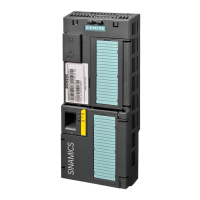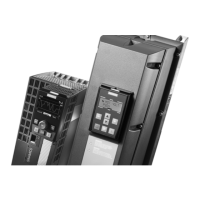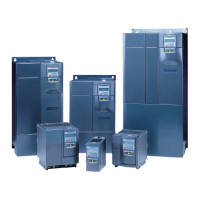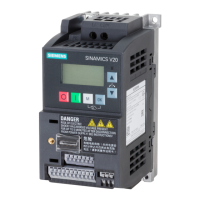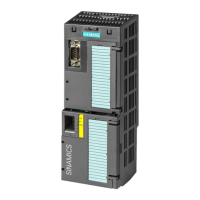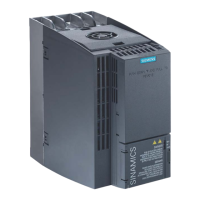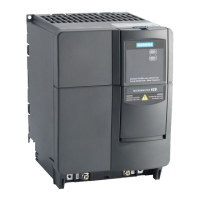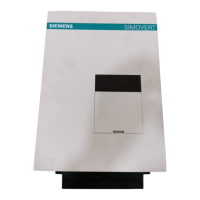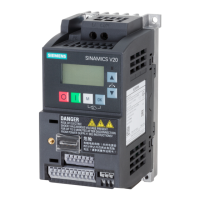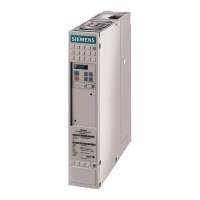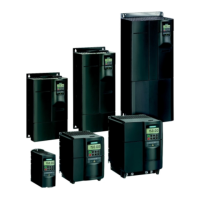SINAMICS G120 Control Units CU240B-2/CU240E-2
List Manual (LH11), 01/2016, A5E33839529
245
2 Parameters
2.2 List of parameters
Description: Sets the configuration for the motor model.
Bit 0 = 1: Forces open-loop speed-controlled starting (ASM).
Bit 1 = 1: Forces the system to pass through frequency zero, open-loop-controlled (ASM).
Bit 2 = 1: Drive remains in full closed-loop control mode, even at zero frequency (ASM).
Bit 3 = 1: Motor model evaluates the saturation characteristic (ASM).
Bit 6 = 1: If the motor is blocked, sensorless vector control remains speed-controlled (ASM).
Bit 7 = 1: Use rugged switchover limits to switchover the model (open-loop/closed-loop controlled) for regenerative
operation (ASM).
Dependency: Not visible with application class: "Standard Drive Control" (SDC, p0096 = 1)
Refer to: p0500
Caution: Do not use bit 6 = 1 if the motor can be slowly reversed by the load at the torque limit. Long delay times due to
blocking (p2177 > p1758) can cause the motor to stall. In this case you should de-activate the function or use closed-
loop control throughout the speed range (note the information re bit 2 = 1).
Note: Bits 0 ... 2 only have an influence for encoderless vector control, bit 2 is pre-assigned depending on p0500.
For bit 2 = 1:
The sensorless vector control is effective down to zero frequency. A change is not made into the open-loop speed
controlled mode.
This operating mode is possible for passive loads. These include applications where the load itself does not generate
any active torque and therefore only acts reactively to the drive torque of the induction motor.
If bit 2 = 1, then bit 3 is automatically set to 1. Manual de-selection is possible and may be sensible if the saturation
characteristic (p1960) was not measured for third-party motors. Generally, for standard SIEMENS motors, the
already pre-assigned (default value) saturation characteristic is adequate.
When the bit is set, the selection of bits 0 and 1 is ignored.
For bit 2 = 0:
Bit 3 is also automatically de-activated.
For bit 6 = 1:
The following applies for encoderless vector control of induction motors:
For a blocked motor (see p2175, p2177) the time condition in p1758 is bypassed and a change is not made into
open-loop controlled operation.
The following applies for encoderless vector control of synchronous motors:
For a blocked motor (see p2175, p2177), the speed ramp-function generator is held in open-loop speed controlled
operation, and a change is not made into closed-loop controlled operation.
For bit 7 = 1:
The following applies for encoderless vector control of induction motors:
If the changeover limits are parameterized too low (p1755, p1756), then they are automatically increased to rugged
values by the absolute amount p1749 * p1755.
The effective time condition for changing over into open-controlled operation is obtained from the minimum value of
p1758 and 0.5 * r0384.
Is recommended that bit 7 is activated for applications that demand a high torque at low frequencies, and at the same
time require low speed gradients..
Adequate parameterization of the current setpoint must be ensured (p1610, p1611).
p1750[0...n] Motor model configuration / MotMod config
PM230
PM230_STO
Access level: 3 Calculated: p0340 = 1,3,5 Data type: Unsigned8
Can be changed: U, T Scaling: - Dyn. index: DDS, p0180
Unit group: - Unit selection: - Func. diagram: -
Min Max Factory setting
- - 0000 1100 bin
Bit field: Bit Signal name 1 signal 0 signal FP
00 Controlled start Yes No -
01 Controlled through 0 Hz Yes No -
02 Closed-loop ctrl oper. down to zero freq. for
passive loads
Yes No -
03 Motor model Lh_pre = f(PsiEst) Yes No -
06 Closed-loop/open-loop controlled (PMSM)
for a blocked motor
Yes No -
07 Use rugged changeover limits Yes No -
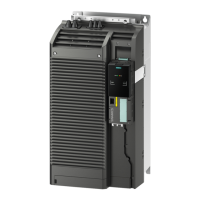
